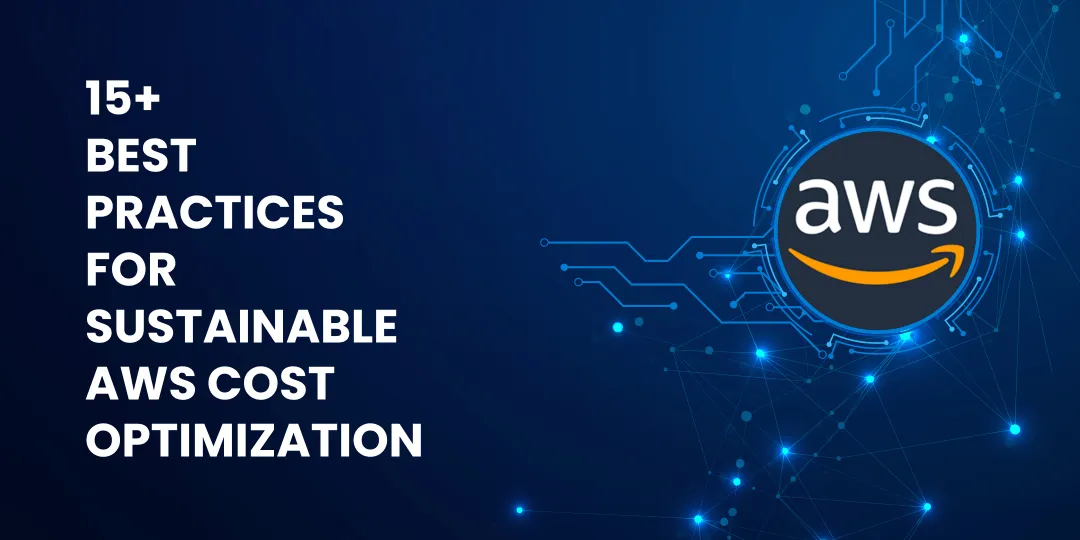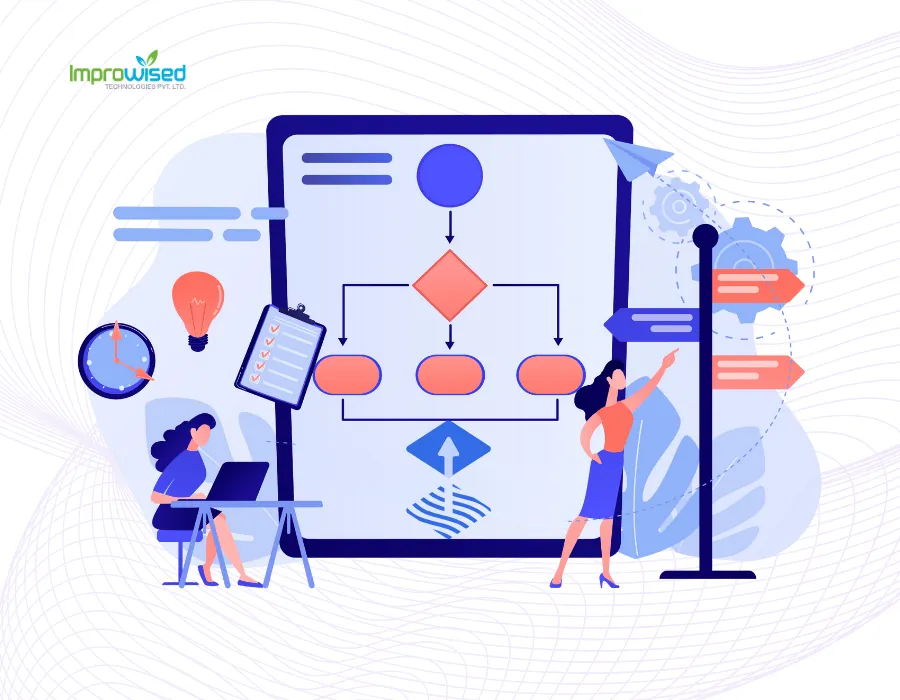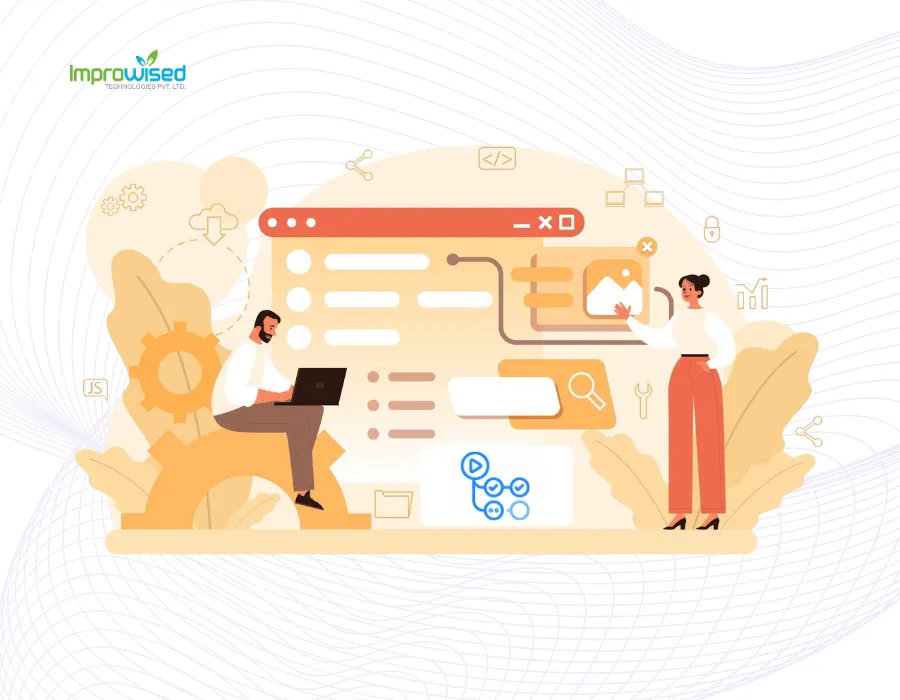October 20, 2025
How to Reduce AWS Costs: Best Practices and Optimization Tools

By Improwised Editorial Team
Improwised Technologies Pvt. Ltd.
To get the most out of AWS and keep coming up with new ideas in a cloud-driven environment, you need to save costs. When businesses grow their cloud presence, even tiny mistakes can add up to big costs. DevOps consulting services are very important because they bring together automation, engineering, and cloud financial discipline to help you manage your AWS costs in a way that lasts. This article has more than 15 tested ways to save money on AWS, talks about tools like AWS Cost Explorer and AI-driven optimizers, and describes how the DevOps and FinOps cultures may help you save money. You’ll learn how to use AWS to cut costs in ways that will last for a long time, no matter if you’re a startup, small business, or large company.
Understanding AWS Cost Optimization Fundamentals
What is AWS Cost Optimization & Why Does it Matter?
AWS cost optimization is a methodical process aimed at managing and minimizing expenditures within Amazon Web Services. It involves aligning resource utilization with genuine business requirements, eliminating inefficiencies, and implementing cloud-native best practices to enhance operational efficiency. The process entails ongoing evaluation of services, including compute, storage, and data transfer; utilizing economical options like Reserved Instances, Savings Plans, and Spot Instances; and optimizing resource allocation to enhance performance while minimizing costs. The core of AWS cloud cost optimization involves the systematic monitoring, tagging, and attribution of costs for accountability, ensuring that each dollar spent in the cloud aligns directly with business objectives.
The significance of cost optimization in AWS is rooted in its capacity to convert erratic cloud expenditures into a managed and strategic allocation, protecting against budget excesses and financial inefficiencies. As cloud utilization increases, even small inefficiencies can rapidly escalate into substantial overspending, adversely affecting business agility, operational performance, and growth. Implementing effective cost optimization in AWS through various activities like regular audits, cross-team collaboration, strategic architecture decisions, and ongoing monitoring leads to savings in AWS billing while establishing a basis for innovation, scalability, and a competitive edge in the current market landscape.
AWS Pricing Models & Factors Influencing Costs
- On-Demand: Compensate based on consumption, ideal for transient or variable demands.
- Reserved Instances and Savings Plans: Engage in consistent usage to secure significant discounts.
- Spot Instances: Use of these instances may lead to disruptions but comes with significantly reduced pricing.
- Managed versus Self-Managed: Utilizing managed AWS services, such as RDS or Lambda, can often result in greater cost efficiency compared to the upkeep of your own infrastructure.
Primary Cost Factors: Compute resources, storage solutions (such as EBS and S3), network data transfer, and support services could be some of the major factors of heavy AWS bills.
Fundamental Design Guidelines:
- Execute AWS cloud financial management, and guide your cloud engineers to assume responsibility for costs.
- Implement a consumption-based model with a pay-as-you-go approach—ensure consistent scheduling and appropriate resource sizing.
- Assess efficiency, allocate expenditures, and eliminate costs associated with non-specialized usage (utilize managed services for operational savings).
- Monitor, evaluate, and categorize each resource for precise accountability.
Optimizing Cost, Performance, and Availability
Optimizing cost, performance, and availability in AWS requires precise resource allocation, ensuring that resources are neither excessive nor insufficient. This prevents waste while fulfilling workload requirements. The equilibrium is attained by choosing the optimal pricing model tailored to each workload: Reserved Instances and Savings Plans for consistent usage, Spot Instances for adaptable or batch tasks, and the On-Demand Pricing Model for immediate scalability. Utilizing managed services such as Amazon RDS or Lambda minimizes operational overhead and enhances high availability and performance optimization.
Utilizing tools like AWS Cost Explorer, Trusted Advisor, and S3 Storage Lens for continuous monitoring allows teams to identify unexpected cost spikes and inefficiencies at an early stage, thereby promoting proactive cost management. The implementation of these practices, underpinned by automation and governance frameworks, constitutes the core of AWS cost optimization best practices. They lay down robust foundations for AWS cloud cost optimization that organizations can depend on for sustainable growth and operational excellence.
Let us now conduct a thorough examination of the optimal strategies and tools for AWS cost optimization in detail.
15+ Best Practices for Sustainable AWS Cost Optimization.
Applying effective AWS cost optimization strategies is crucial for managing expenditures and improving cloud efficiency. These practical AWS cost optimization strategies and techniques enable organizations to rightsize resources, automate cost-saving measures, and ensure ongoing visibility into their expenditures. Implementing a detailed AWS cost optimization checklist that encompasses scheduling, tagging, purchasing strategies, and monitoring enables businesses to attain sustainable cost efficiency in AWS, aligning with both performance and budget objectives.

- Optimize Resource Allocation:
Evaluate and align resource types and sizes with your actual requirements—including services like EC2, databases, EBS, and S3 classes. - Automate the scheduling of workloads:
Disable development, testing, and non-essential workloads during non-business hours - Leverage Spot Instances:
Employ them for continuous integration and continuous delivery, analytics, or any tasks that can withstand interruptions. - Enable Auto Scaling for All Major Apps:
Let AWS dynamically adjust capacity in real time to actual demand. - Delete Unused/Idle Resources Aggressively:
Scheduled cleanups for virtual machines, unassociated Elastic Block Store volumes, orphaned snapshots, and legacy Elastic Load Balancers. - Embrace Managed Services:
Opt for managed services such as RDS, DynamoDB, or Fargate instead of self-hosted alternatives to streamline operations and minimize unforeseen expenses. - Storage Optimization Through Policy Implementation:
Implement S3 lifecycle rules and automate the deletion of snapshots for EBS and S3. - Reserve for Predictable Workloads:
Select either Standard or Convertible Reserved Instances, or opt for Compute/EC2 Savings Plans according to your projections. - Monitor with Cost Explorer/AWS Budgets:
Implement real-time expenditure dashboards and anomaly detection alerts. - Enhanced Tagging and Attribution:
Assign tags to resources based on project or team to ensure cost traceability and accountability. - Sell Unused Reserved Instances:
Use the RI Marketplace to offload unused commitments and recover a portion of expenses. - Optimize Data Transfer & Network Pathways:
Utilize VPC endpoints, implement edge caching, and reduce cross-region data transfers. - Upgrade Instance Families:
Consistently transition to the latest EC2 generations or Graviton instances to achieve reduced costs per compute. - Set Hard Budget Alerts:
Proactively send warning alerts and stop accidental overages. - Foster DevOps/FinOps Culture:
Align finance and engineering teams in order to make AWS cost efficiency as everyone’s responsibility. - Use Infrastructure as Code (IaC):
Automate repeatable, policy-compliant deployments with Terraform, CloudFormation, or CDK. - Continuously Educate Teams:
Invest in cloud financial literacy, especially for the platform/DevOps/SRE team of engineers and product owners. - Real-World Benchmarks:
Regularly review and benchmark savings (e.g., “Rightsizing saved 40% on EC2 for X project”).
Reserved Instances (RIs) and Savings Plans
- What are RIs/Savings Plans?
Commitment-based pricing options for predictable workloads; provides discounts up to 72% off. - Standard vs. Convertible RIs:
Higher savings for less flexibility vs. lower savings but with instance-family changes. - Spotlight Tip:
Sell unused RIs on the AWS Marketplace to avoid sunk costs. - Checklist:
- Always forecast conservatively.
- Review utilization periodically.
Leveraging Spot Instances for Cost Saving
- What Are Spot Instances?
Access spare capacity at up to 90% off discount rates. They are ideal in situations where one can afford interruptions. - Combine Spot with On-Demand and RIs:
Orchestrate with Auto Scaling groups, EC2 Fleet, and Spot.io. - Management Tools:
Use auto-fallback, cost-aware workload placement, and anomaly alerts for interruptions.
FinOps: Bridging Finance and Cloud Operations
- FinOps Culture:
Build a culture where teams can share spend ownership, transparency, and budget forecasting. - Platform Engineering Role:
Improwised Technologies helps implement FinOps frameworks, ensuring engineering, product, and finance teams can see and optimize cloud spending and ROI. - Maturity Levels:
Use FinOps maturity models to improve cost culture over time.
Also Read: Platform Engineering vs Devops: Which is best for you?
Tools and Services for AWS Cost Optimization
AWS Native Tools:
- Cost Explorer: Provides detailed insights into AWS spending and usage patterns to help identify cost-saving opportunities.
- Cost Optimization Hub: A centralized resource providing best practices and recommendations for optimizing AWS expenditures.
- Trusted Advisor: Provides real-time assessments of underutilized resources, identifies security vulnerabilities, and recommends cost-saving strategies.
- S3 Storage Lens: Provides detailed metrics on S3 storage utilization and expenses, facilitating policy-based storage optimization.
- Compute Optimizer: Employs machine learning algorithms to suggest optimal right-sizing and instance family modifications for EC2.
- AWS Budgets: Facilitates the establishment of budget limits and the receipt of notifications to avert excessive expenditures.
- AWS Cost Calculator: Helps estimate and plan cloud costs before provisioning resources.
Latest Features:
- Utilizing AI and machine learning for predictive analytics within Cost Explorer and Compute Optimizer enhances forecasting accuracy and optimizes resource recommendations.
- Automated snapshot lifecycle policies for storage cost management.
- Policy-based automated cost controls integrated with AWS Management Console.
Third-party Solutions:
- Spot.io: Streamlines the management of Spot Instance lifecycles and optimizes workload scheduling to enhance cost efficiency.
- CloudZero: Provides sophisticated cost attribution and immediate visibility into cloud expenses across various teams and projects.
- nOps: Delivers extensive cloud governance dashboards along with automated recommendations for cost optimization.
- CloudHealth by VMware: Provides comprehensive management of multi-cloud costs and assets, featuring detailed service-level insights.
- Granulate: Optimizing application performance in real-time to minimize computational expenses.
Importance of Their Significance:
- Facilitate advanced spend forecasting, identify cost anomalies, and implement automated optimization measures.
- Deliver enhanced visibility and management capabilities suited for intricate, multi-account ecosystems and hybrid cloud infrastructures.
Tailored Guidance:
- Enterprises benefit from layered forecasting, tagging, and multi-dimensional reporting.
- SMBs and startups can start cost optimization with native AWS tools and advisor recommendations before adopting third-party automation.
Use Cases and Examples: How Improwised Technologies Drive AWS Cost Reduction
EdTech:
Rightsizing and managed storage delivered 30% savings.
FinTech:
Custom Spot/RIs blend and anomaly detection cut variable spend by 40%.
SaaS:
Automated tagging and governance suite surfaced hidden costs.
Healthcare:
Lifecycle automation of backups and analytics storage achieved 25% lower storage costs.
Why Choose Improwised Technologies as Your AWS Cost-Saving Partner? Act Now to Transform Your Cloud Spend!
In the current digital environment characterized by intense competition, efficient cost optimization in AWS has become essential rather than optional. Unmonitored cloud expenditures can rapidly deplete resources and hinder innovation. Improwised Technologies provides specialized AWS cost optimization services, leveraging advanced DevOps consulting and practical platform engineering expertise. Our established AWS cost optimization methodologies emphasize rightsizing, automation, and ongoing monitoring, achieving quantifiable reductions in cloud expenses while maintaining performance and scalability.
By partnering with Improwised, you can gain access to tailored cost optimization in AWS frameworks, real-time insights, predictive analytics, and ongoing governance, which ultimately ensures that your AWS investments yield the highest ROI. Regardless of whether you represent a large enterprise or a rapidly expanding startup, our comprehensive methodology integrates effortlessly into your cloud operations, aiming to reduce inefficiencies, enhance expenditure management, and expedite innovation.
Don’t let rising AWS bills hold you back. Contact Improwised Technologies today and leverage the best AWS cost optimization consulting and cloud cost management expertise to future-proof your cloud journey and transform your AWS costs into a strategic advantage.
Frequently Asked Question
Get quick answers to common queries. Explore our FAQs for helpful insights and solutions.

December 12, 2025
Continuous Deployment with FluxCD: Architecture, Flow & Best Practices

By Shyam Kapdi
Improwised Technologies
Pvt. Ltd.

December 10, 2025
CI with GitHub Actions: End-to-End Pipeline Setup Guide

By Shyam Kapdi
Improwised Technologies
Pvt. Ltd.

December 5, 2025
Separating CI and CD: The Key to Faster, Safer Delivery

By Shyam Kapdi
Improwised Technologies
Pvt. Ltd.
Optimize Your Cloud. Cut Costs. Accelerate Performance.
Struggling with slow deployments and rising cloud costs?
Our tailored platform engineering solutions enhance efficiency, boost speed, and reduce expenses.
